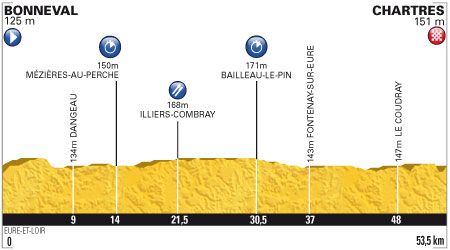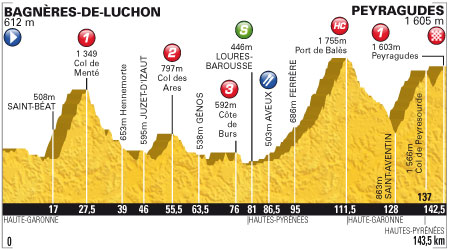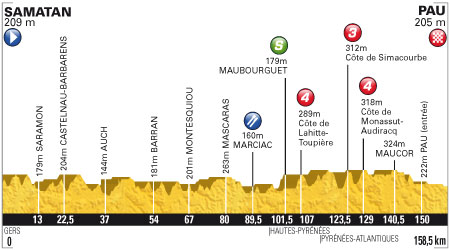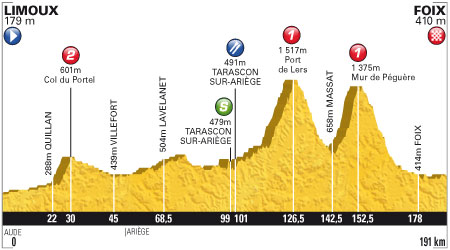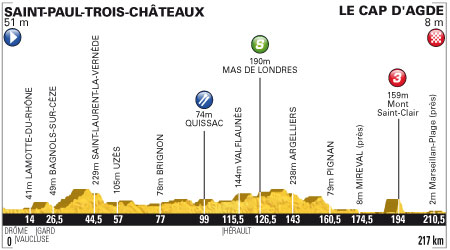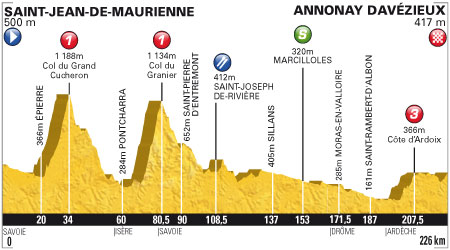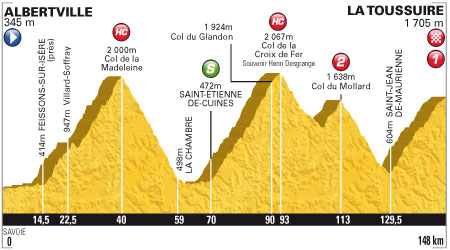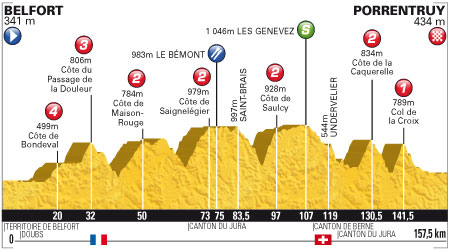As usual, everything is all locked up as the party heads for Paris. Bradley Wiggins showed that although he may have been weaker in the mountains, he was dominant in the race against the clock. Had Froome been on his own team, he would have had a lot of time to make up in the mountains, given the two minutes he conceded in the time trials. On the 53.5 km route to Chartres for Stage 19, Wiggins took 1’30” out of Froome, who was in second, as the two of them again showed that they were the class of the peloton.
With first and second locked up, Sky now tries to put the cherry on top with a fourth win in a row for Mark Cavendish on the Champs-Élysées. The World Champion will have eager challenges from the usual suspects, the two triple stage winners of the Tour: the Green Jersey, Peter Sagan, and Andre Greipel, along with Matthew Goss, who will be trying to redeem a tepid first Tour for Orica-Greenedge by netting their first stage win. In fact with Goss, Orica is one of the only teams with a chance to salvage their Tour with a win. Given the dominance of Sky, Sagan, and Greipel, who have scooped up 11 stages among them so far, with good odds that the last stage will go to that group as well, there have been fewer opportunities for the lesser teams to get in with a chance.
One team that has had a solid, albeit drama-ridden, Tour is RadioShackTrekNissanLeöpard. Coming into the year as an unhappy marriage of two teams with Bruyneel fighting with the Luxembourg contingent and a series of crashes and withdrawals highlighting the early season. Then when they lost their best GC hope just before the Tour when Andy Schleck crashed at the Critérium du Dauphiné, the team really needed good things to happen at the Tour. Fortunately, Fabian Cancellara was back from injury and after winning the Prologue, Spartacus fought hard to hold the Yellow Jersey for a full week, giving them something to build on. Cancellara provided the only stage win for the team, but with a solid stable of second tier GC guys the unhappy, feuding, dysfunctional team found itself in the lead of the team competition. But although Jens Voigt and Yaroslav Popovych worked hard to keep the team in position, things were not all smooth sailing, for in the midst of the Tour Fränk Schleck got kicked out for testing positive for a masking agent. So while Schleck protests his innocence and the team prepares to fracture before next year, Haimar Zubeldia (6th overall), Andreas Klöden (11th) and his friend Chris Horner (13th), Maxine Monfort (16th), and the super-domestiques Yaroslav Popovych, and Jens Voigt, will be riding down the Champs-Élysées as the best team in the Tour. Not the most prestigious of palmarès handed out at the Tour, but quite the accomplishment by a number of very accomplished riders for an unhappy team.



